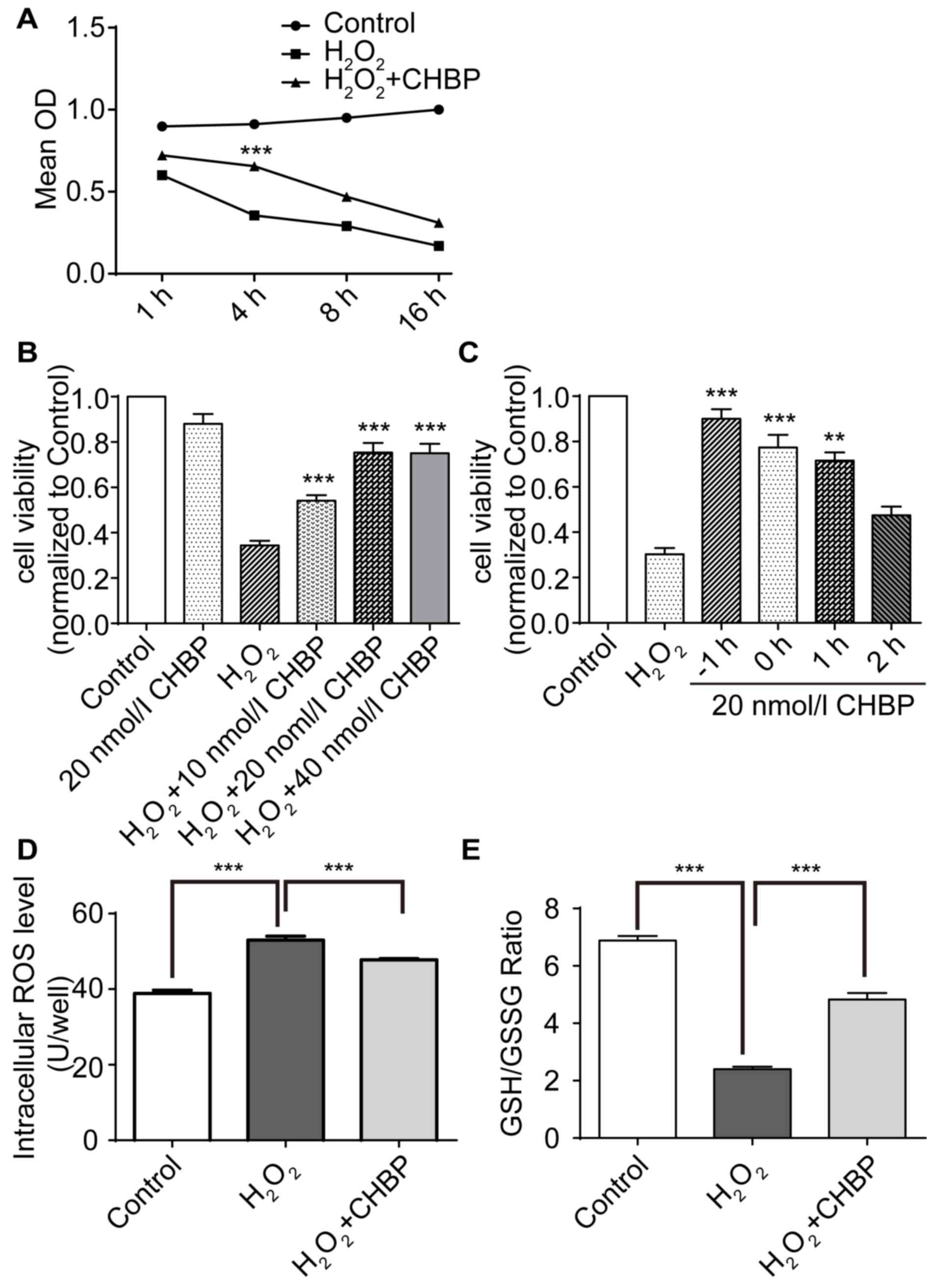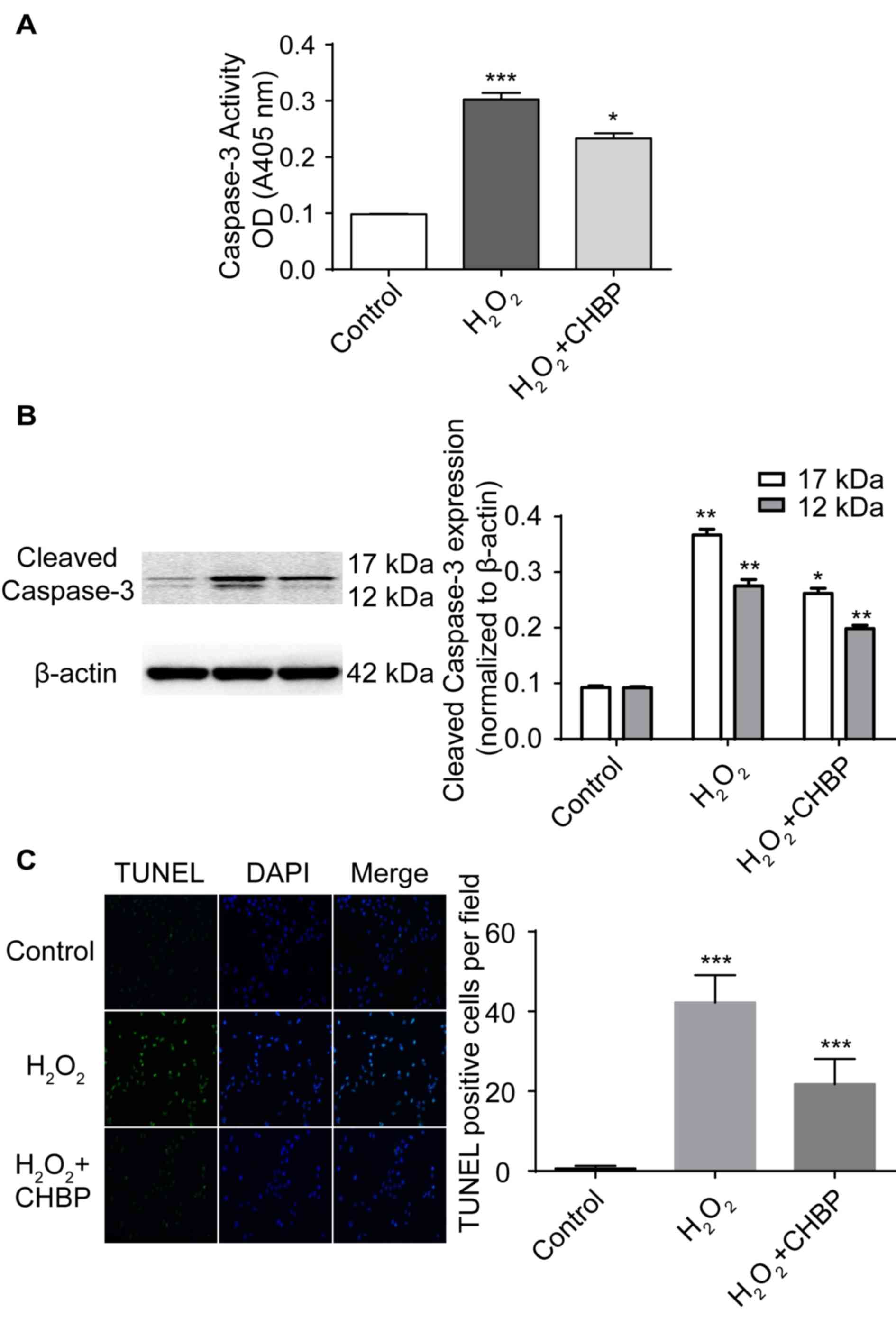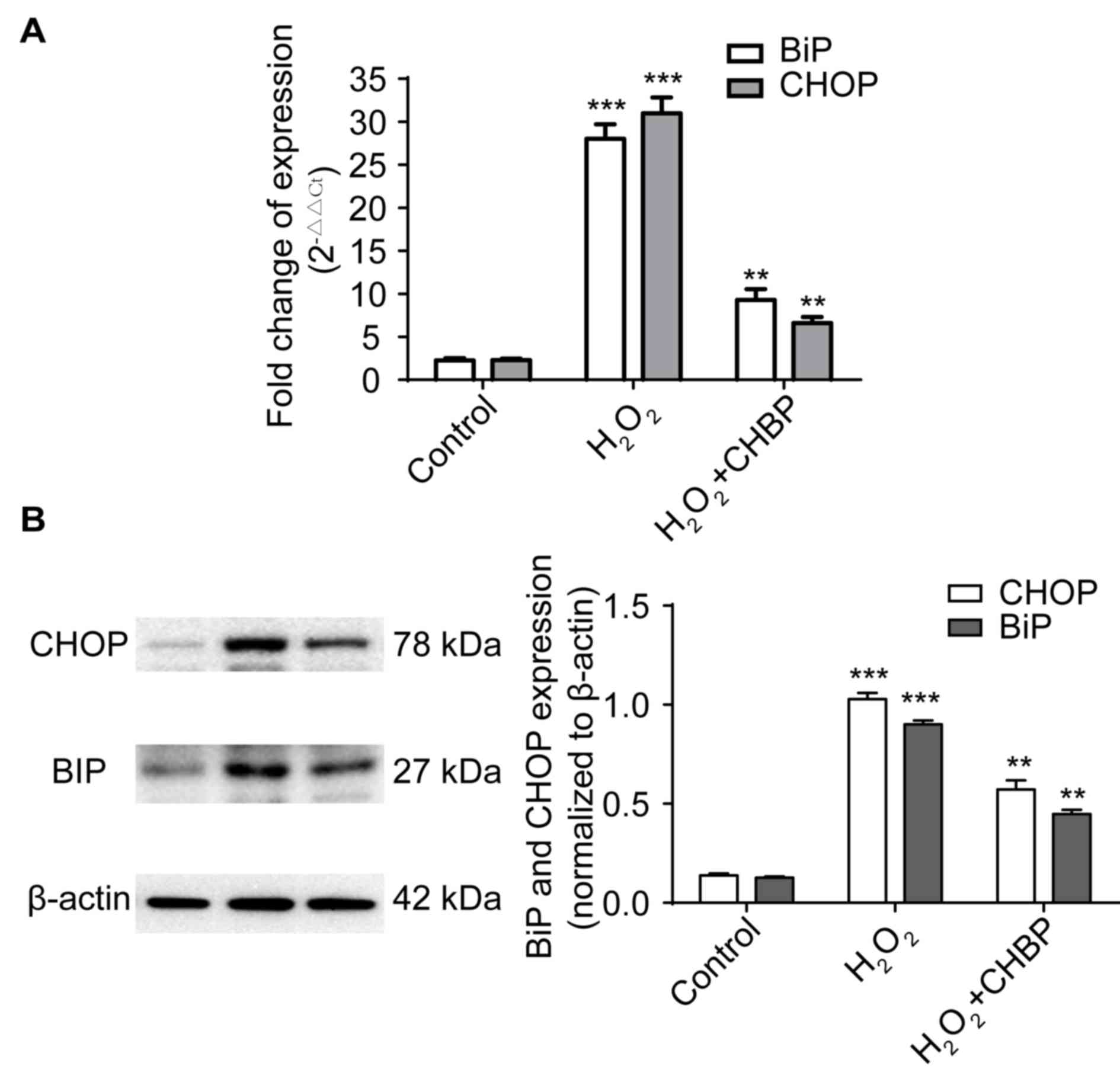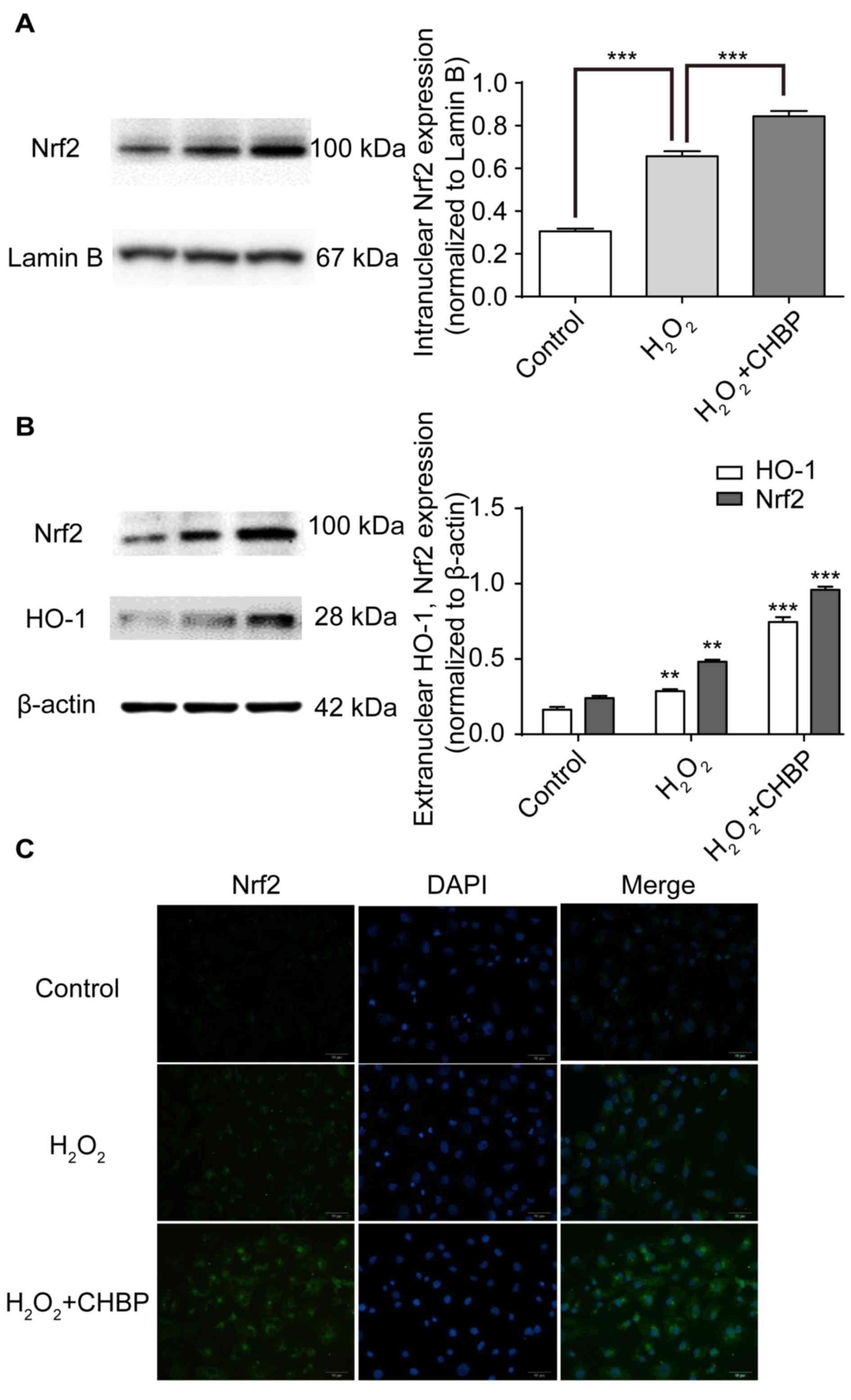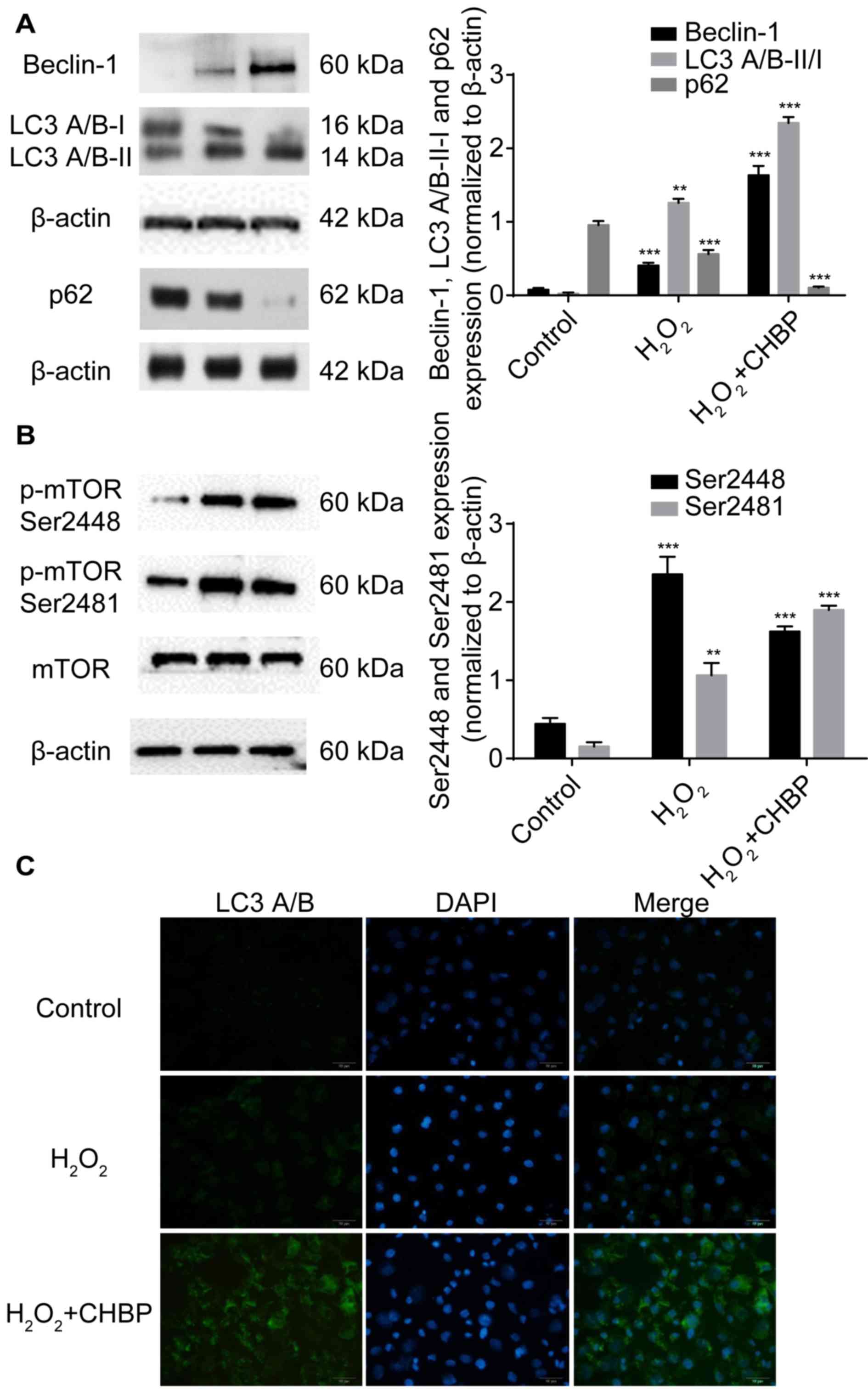Cyclic helix B peptide protects HK‑2 cells from oxidative stress by inhibiting ER stress and activating Nrf2 signalling and autophagy
- Authors:
- Published online on: September 22, 2017 https://doi.org/10.3892/mmr.2017.7588
- Pages: 8055-8061
-
Copyright: © Li et al. This is an open access article distributed under the terms of Creative Commons Attribution License.
Metrics:
Total
Views: 0 (Spandidos Publications: | PMC Statistics:
)
Total PDF Downloads: 0 (Spandidos Publications: | PMC Statistics:
)
Abstract
Renal ischemia‑reperfusion injury (IRI) is present in numerous diseases and is observed following certain treatments, including renal transplantation. Preventing tubular epithelial cells (TECs) from undergoing apoptosis is vital for treatment of renal IRI. Cyclic helix B peptide (CHBP) is a novel agent that has a protective effect on renal IRI in vivo. In the present study, the effect and underlying mechanism of CHBP on TECs was investigated. The HK‑2 human renal proximal tubular epithelial cell line was treated with 500 µmol/l H2O2 for 4 h prior to determining the effect of CHBP pretreatment for 1 h on cell viability, caspase 3 activity and expression levels, expression levels of oxidative stress markers, endoplasmic reticulum (ER) stress markers, NF‑E2‑related factor 2 (Nrf2), heme oxygenase‑1 (HO‑1) and autophagy markers. This was investigated using a Cell Counting kit 8, a terminal deoxynucleotidyl transferase‑mediated dUTP nick‑end labelling assay, western blotting, reverse transcription‑quantitative polymerase chain reaction and immunocytochemistry. Results revealed that pretreatment with CHBP enhanced HK‑2 cell viability, the glutathione/glutathione disulphide ratio, activation of Nrf2 and mRNA expression levels of HO‑1 and the expression levels of beclin‑1 and light chain 3 A/B‑II/I. Conversely, CHBP pretreatment reduced the expression levels of reactive oxygen species, the activity and protein expression levels of capase‑3, the mRNA and protein expression levels of C/EBP homologous protein and binding immunoglobulin protein, and the expression levels of phosphorylated (p)‑mechanistic target of rapamycin (mTOR) Ser2448 and p62 during oxidative stress. However, the expression of p‑mTOR Ser2481 was enhanced after CHBP pretreatment. CHBP pretreatment reduced the expression levels of reactive oxygen species, the activity and protein expression levels of capase‑3, the mRNA and protein expression levels of C/EBP homologous protein and binding immunoglobulin protein, and the expression levels of phosphorylated (p)‑mechanistic target of rapamycin (mTOR) Ser2481, p62 and p‑mTOR Ser 2448 during oxidative stress. In conclusion, CHBP pretreatment protected HK‑2 cells from H2O2‑induced injury, inhibited ER stress and pro‑apoptotic pathways, and activated the Nrf2 signalling pathway and autophagy. These results provide a potential mechanism of how CHBP protects against renal IRI.



